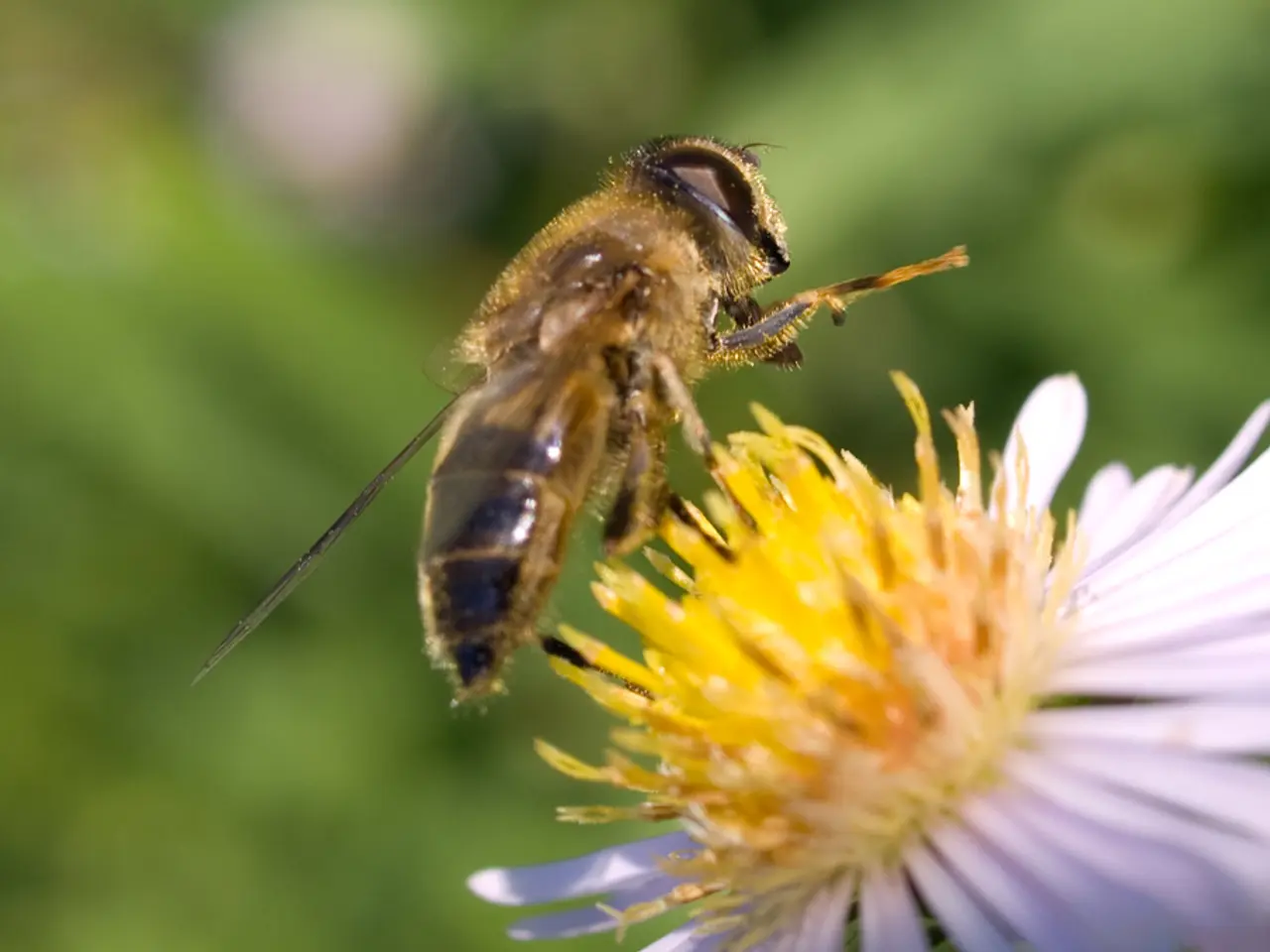Unveiling the Implications of Laboratory Analysis for Your Jar of Manuka Honey
In the world of honey, Manuka honey has gained a reputation for its unique properties and potential health benefits. To ensure that consumers receive genuine, high-quality Manuka honey, a series of rigorous tests and standards have been established.
Every batch of Manuka honey sold on our website undergoes independent verification to be free from contaminants such as glyphosate, antibiotics, and genetically modified organisms (GMOs). This verification process is crucial for maintaining the purity of the honey.
The website offers full transparency with QR code traceability and third-party testing. This means that consumers can easily access detailed information about the origin, UMF certification, and lab test results of each jar.
Manuka honey from our website is a natural source of antioxidants, nutrients that support immune wellness, and prebiotics that aid in maintaining digestive balance. The key to this honey's potency lies in its unique chemical composition.
Laboratory testing is the backbone of verifying the authenticity, purity, and quality of Manuka honey. The tests focus on four primary chemical markers: Methylglyoxal (MGO), Leptosperin, Dihydroxyacetone (DHA), and Hydroxymethylfurfural (HMF).
MGO is the hallmark antibacterial compound that gives Manuka honey its unique antimicrobial and antioxidant potency. High MGO levels indicate strong natural activity and quality. Leptosperin is considered the most accurate authenticity marker, unique to Manuka honey and helps confirm whether the honey is truly derived from Manuka flowers. DHA is a precursor to MGO and helps determine the potential maximum concentration of MGO that the honey can develop. HMF measures freshness, as it forms when sugars degrade over time or with excess heat. Low HMF values indicate fresh, well-handled honey.
Together, these four markers constitute the basis of the internationally recognized UMF™ (Unique Manuka Factor) grading system, which guarantees authenticity and quality by independent certification bodies.
In addition to these primary markers, laboratories may also test for other natural compounds such as 3-Phenyllactic acid, 2’-Methoxyacetophenone, and 2-Methoxybenzoic acid to further profile the honey’s authenticity and quality.
By law in New Zealand, Manuka honey exported must also be analyzed for a DNA marker to confirm the presence of Manuka pollen or DNA, ensuring raw material authenticity.
Quality assurance procedures include testing by independent, accredited laboratories using scientifically validated methods. Honey batches undergo rigorous traceability from hive to shelf, often linked by QR codes on jars providing transparency on origin, UMF certification, and lab test results.
The absence of contaminants such as glyphosate and antibiotics is also verified to certify purity. Facilities are typically inspected under RMP (Risk Management Program) and HACCP food safety standards, ensuring the production environment meets high quality and safety requirements. The NZ Government issues the Fernmark Licence to authenticate provenance and production standards.
In summary, verifying Manuka honey authenticity and quality involves laboratory testing of four primary chemical markers (MGO, Leptosperin, DHA, HMF), DNA testing for Manuka pollen, and independent certification processes such as UMF™ grading. These combined measures confirm the honey’s source, purity, freshness, and antibacterial potency, ensuring consumers receive genuine Manuka honey.
Trusted brands like ours include third-party results with every jar, ensuring authenticity and transparency. The right MGO level for each person may vary, with some preferring higher levels for a richer taste and others enjoying lower levels for daily enjoyment. Every jar of honey from our website includes a unique QR code for viewing specific test results, harvest origin, and handling practices.
- Manuka honey's unique properties and potential health benefits have garnered it acknowledgment in the realm of science.
- A series of stringent tests and standards have been imposed on the Manuka honey sold on our website to guarantee its authenticity and high quality.
- To verify the absence of harmful contaminants like glyphosate, antibiotics, and GMOs in every batch of Manuka honey sold, independent verification is carried out.
- The verification process is integral for maintaining the purity of the honey.
- Our website offers full transparency through QR code traceability and third-party testing, allowing consumers to access detailed information about their Manuka honey.
- Antioxidants, nutrients, and prebiotics, which support immune wellness and maintain digestive balance, are naturally present in Manuka honey from our website.
- The power of Manuka honey lies in its distinctive chemical makeup.
- Laboratory testing is essential for verifying the authenticity, purity, and quality of Manuka honey.
- Tests focusing on four primary chemical markers - MGO, Leptosperin, DHA, and HMF - serve as the foundation for this process.
- MGO, the antibacterial compound responsible for Manuka honey's unique antimicrobial and antioxidant potency, is investigated in these tests.
- High MGO levels indicate strong natural activity and high quality in the honey.
- Leptosperin is the most accurate authenticity marker, found exclusively in Manuka honey, helping to confirm its origin from Manuka flowers.
- DHA acts as a precursor to MGO and helps determine the potential maximum concentration of MGO that the honey can develop.
- HMF measures freshness, as it forms when sugars degrade over time or due to excess heat.
- Low HMF values indicate fresh, well-handled honey.
- Together, these four markers form the basis of the internationally recognized UMF™ grading system, ensuring authenticity and quality through independent certification bodies.
- Laboratories may also analyze other natural compounds like 3-Phenyllactic acid, 2’-Methoxyacetophenone, and 2-Methoxybenzoic acid to further profile the honey’s authenticity and quality.
- By law in New Zealand, Manuka honey exported must be checked for a DNA marker to confirm the presence of Manuka pollen or DNA, ensuring raw material authenticity.
- Quality assurance procedures encompass testing by independent, accredited laboratories using scientifically validated methods.
- Honey batches undergo extensive traceability from hive to shelf, often linked by QR codes on jars to provide transparency on origin, UMF certification, and lab test results.
- Facilities are regularly inspected under RMP (Risk Management Program) and HACCP food safety standards to ensure compliance with high quality and safety requirements.
- The NZ Government issues the Fernmark Licence to authenticate provenance and production standards.
- In summary, verifying Manuka honey authenticity and quality involves laboratory testing of four primary chemical markers, DNA testing for Manuka pollen, and independent certification processes like UMF™ grading.
- These measures confirm the honey’s source, purity, freshness, and antibacterial potency, guaranteeing consumers receive genuine Manuka honey.
- Trusted brands such as ours provide third-party results with every jar, ensuring authenticity and transparency.
- The right MGO level for each individual may vary, with some preferring higher levels for a richer taste and others enjoying lower levels for daily use.
- Every jar of honey from our website includes a unique QR code for viewing specific test results, harvest origin, and handling practices.




